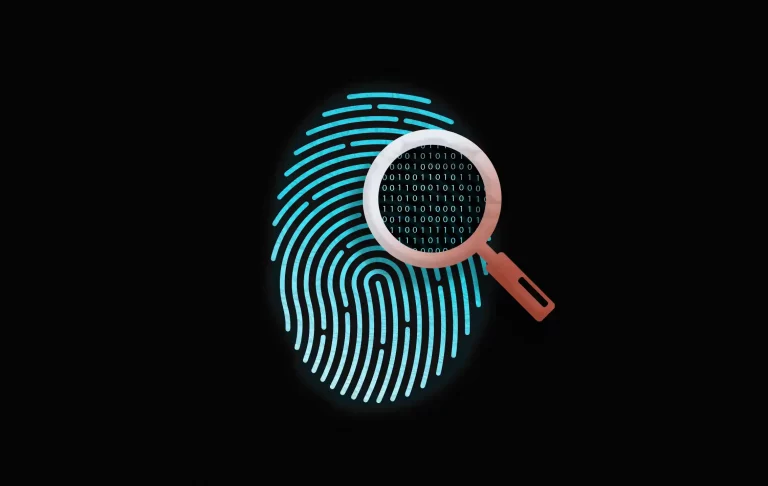In an time dominated by the internet and ever-advancing surveillance technology, managing our online presence has become a critical concern.
Ubiquitous Technical Surveillance, the collection and long-term storage of data in order to analyze and connect people together, changed the landscape. As the ability to collect and store data became easier and cheaper, it also made it easier and cheaper for adversaries to track us and attack us. With the growing number of threats to our privacy and security, and their increased sophistication, individuals and organizations need to adopt effective security practices to protect themselves.
As a response to this UTS era, the concept of “Managed Attribution” has emerged as a powerful tool to protect our digital identities.
In this article, we will dive into the topic of Managed Attribution, exploring what it is, how it works, and its implications for privacy and security in the digital age.
Defining Managed Attribution
So what is Managed Attribution, and when do you use it?
When we try and define Managed Attribution, a few other phrases come up, such as Non-attribution and Misattribution. Let’s go step-by-step.
We’ll start by defining what “Attribution” itself is.
Attribution
“Attribution” is looking at a behavior or activity and determining who was behind it. Simply put, it’s answering the question “who did this?”
To answer that question, one would analyze aspects of the digital signature to figure out who performed a certain action. The same way that detectives utilize forensics to investigate crime scenes and find clues, you can perform digital forensics to find who to attribute an action or behavior to.
Non-Attribution
Now that we understand attribution, we can define non-attribution.
“Non-attribution” is a lack of attribution, which could happen when there is either insufficient data, or the data doesn’t point anywhere.
If an investigation failed to tie an activity to any individual or organization, that would be considered non-attribution. If we’re asking “who did this?”, non-attribution is the answer that “nobody did this“. Frankly, that answer doesn’t make a lot of sense in the UTS era, as there’s always going to be some kind of digital signature that forensics will pick up.
What’s much more likely to happen is “misattribution”.
Misattribution
“Misattribution” is an incorrect attribution which happens when an investigation ties an activity or behavior to the wrong individual or organization.
This could happen because the digital signature has been altered, masked, or because of bad investigative procedure.
We could simplify it as answering “Person A did this”, when in reality it was “Person B”.
Now we can define Managed Attribution.
Managed Attribution
Managed Attribution is the control and manipulation of a digital signature to create non-attribution, or more likely, misattribution.
Managed Attribution is done deliberately, with the aim of obfuscating or concealing the true identity of the user. It involves creating a layer of anonymity that makes it difficult for others to trace back online actions to a specific individual or entity.
You would use Managed Attribution when you want to be covert or clandestine in your online activity. Adversaries are looking for anomalies in data patterns, so typically, the strategy is to blend in with the crowd, and avoid standing out.
This practice has various applications, from protecting individuals’ privacy to enhancing cybersecurity and conducting sensitive online operations.
For example, if you were a business that wanted to acquire some land, but you didn’t want any of your competitors to know about it, you could utilize Managed Attribution to research and negotiate the purchase without giving away your identity. This would give you a competitive edge and help your negotiating position.
Managed Attribution is not limited to any one technology or methodology. Rather, it encompasses a variety of strategies and tools to achieve those goals.
How Managed Attribution Works
Managed Attribution operates by employing a range of techniques to obscure or diversify the digital traces we leave online.
To determine the best tools to use, you’d consider a couple main factors. Firstly, what is your goal? Why are you employing Managed Attribution in the first place? Is it a private enquiry, corporate research, or a matter of national security? Secondly, how sophisticated is the adversary? What kind of resources do they have, what are their policies, are they already aware of you?
Based on your use case, just one of these tools might suffice, but many times the best approach is to use a combination of them. Some operate on a device level, some on a software level, and some on a server level. This means they can be layered together to provide a strong degree of anonymity.
Let’s explore some of the key methods used in Managed Attribution:
Virtual Machines (VMs)
Virtual machines (VMs) are isolated environments that can run on a single physical machine. By using VMs, users can create and manage separate digital identities, each with its own IP address and configuration. This adds an additional layer of complexity for anyone attempting to trace back to the user.
Virtual Private Server (VPS)
A virtual private server (VPS) is a virtual machine that provides dedicated server space with a reserved amount of resources. VPS hosting uses virtualization technology to provide customers with dedicated resources within a shared server environment.
Virtual Private Networks (VPNs)
VPNs are widely used for managing attribution. They encrypt the user’s internet traffic and route it through servers located in various geographic locations. This not only hides the user’s IP address but also allows them to appear as if they are connecting from a different region or country.
Proxy Servers
One of the fundamental tools for managed attribution is the use of proxy servers. These servers act as intermediaries between a user’s device and the internet, effectively hiding the user’s IP address and location. This makes it challenging for websites and services to trace back the user’s online activities.
Browser Fingerprinting Protection
Browsers can reveal a lot of information about a user, from their screen size to installed plugins. Managed Attribution tools often include features to mitigate browser fingerprinting, which helps in further protecting users’ identities. An example would be the browser extension Privacy Badger.
TOR (The Onion Router)
TOR is a specialized network that routes internet traffic through a series of volunteer-run servers. It is designed to provide anonymity by making it extremely difficult to trace the origin of data requests.
Implications For Privacy and Security
Since the main reason for using Managed Attribution is to be covert or clandestine, it can be used in many different use cases.
Privacy Enhancement
Managed Attribution tools empower individuals to protect their privacy online. In an age where data is often collected and sold by companies, having the ability to control what information is accessible can really disrupt the ad-tech economy.
Cybersecurity
Managed Attribution is not limited to individuals seeking privacy; it is also a critical tool in the realm of cybersecurity. Organizations use these methods to protect their networks from cyber threats. By obscuring their digital footprint, they make it challenging for cybercriminals to identify vulnerabilities or gain access to sensitive data.
Whistleblowing and Investigative Journalism
Managed Attribution has played a significant role in enabling whistleblowers and investigative journalists to share sensitive information while protecting their identities. Without such tools, exposing corruption or malpractice might be too risky for those with valuable information to share.
Digital Activism
Activists in repressive regimes often rely on managed attribution to protect themselves from state surveillance. By concealing their true identities, they can advocate for change without risking personal safety.
Ethical Concerns
The use of Managed Attribution raises complex legal and ethical questions.
On one hand, it can be used for noble purposes, a valuable tool to increase our privacy and security. On the other hand, it can be abused by malicious actors, enable criminal activity, and hinder law enforcement efforts. There are many instances of cybercriminals using these techniques to make themselves difficult to track and apprehend.
Legally, the use of Managed Attribution can sometimes be in a gray area. Some jurisdictions, such as China, Russia, or Iran have strict laws against the use of certain technologies like VPNs and proxy servers, while others permit them. Moreover, international laws and regulations regarding Managed Attribution are still evolving.
Ethically, individuals and organizations must consider the consequences of their actions when using Managed Attribution. While it can be a powerful tool for safeguarding privacy and security, it should not be used to facilitate illegal activities or harm others.
Conclusion
Managed Attribution is a double-edged sword in the digital age, offering both the promise of enhanced privacy and security and the potential for misuse. As technology continues to advance and our online presence becomes increasingly intertwined with our real lives, the importance of Managed Attribution cannot be understated.
Individuals, organizations, and governments must navigate the evolving landscape of Managed Attribution, balancing the need for privacy and security with the ethical questions raised by the technology itself.
Interested in learning more about Managed Attribution? Our unique Universe network provides an infrastructure tailor made for covert and clandestine use. Get in touch with us to learn more.


